
As far as all-in-one water coolers go, you usually don’t have Alphacool quite as much in mind as you do with custom water coolers. Nevertheless, Alphacool offers several AIO series. In the budget range, you’ll find typical AIOs with the Core Ocean series and in the higher price range, you’ll find the Eisbaer AIOs. These are more or less a borderline between typical all-in-one water coolers and custom water coolers, because at the end of the day, this is more or less an AIO cooler that is completely composed of custom parts and is expandable. On test here, we have the Alphacool Eisbaer Pro Aurora 360 CPU AIO.
Specifications
Since the specifications are rich and the parts can also be put into use separately as custom parts, they are listed separately for the individual components of the Alphacool Eisbaer Pro Aurora 360 CPU.
Radiator
| Size (length x width x height) | 390 x 120 x 30 mm |
| Material cooling fins, prechambers, cooling channels | Copper |
| Material thread | brass |
| Material outer casing | Rustproof steel |
| Connections | 2x G1/4″ |
| Fan | 3x 120 mm (single-sided) / 6x 120 mm (push/pull) |
| fin spacing | 15 FPI (fins per inch) |
Cooler Bottom Pump Unit
| Compatible Intel sockets | 1700 / 2011 / 2011-3 / 2066 / 3647 Narrow & Square / LGA 4189 |
| Compatible AMD sockets | AM4 / TR4 / sTRX4 / SP3 / sWRX8 / AM5 |
| Size (length x width x height) | (64 x 79 x 54.3 mm) |
| Material radiator bottom | Nickel-plated copper |
| Material housing and expansion tank | PMMA |
| Pump | DC-LT2 |
| Speed | 2600 RPM (+/- 10%) |
| Height | 1 m |
| Maximum flow | 72 L/h |
| Operating voltage | 6 – 13.5 V |
| Current consumption | 3.2 W |
Fan
| Model | Alphacool Aurora Rise 120 mm |
| Size (length x width x height) | 120 x 120 x 25 mm |
| Speed | max. 2,500 RPM (+/- 10%) |
| Connection | 4-pin PWM |
| Cable length | 40 cm |
| Static pressure | 3.17 mm/H₂O |
| Air flow | 118.9 m³/h |
| Current consumption | Up to 7.8 W |
| Volume | max. 31.5 dB(A) |
| RGB | 20 ARGB LEDs per fan |
Other
| Liquid | Clear, distilled water with glysantine |
| Quick release coupling | 95 x 27 mm nylon |
| Connectors | Brass, 24 x 18 mm (2x straight), 35 x 27 x 17 mm (2x 90°) |
| Tube | TPV (EPDM/PP), black, 12.7 / 7.6 mm |
| Hose length | 40 cm |
| Price | € 187.90 * |
Concept
- Expandable system made of custom water cooling parts
- Copper radiator with high thermal conductivity
- Strong pump is enough for system expansion
Before the actual test, I’ll pull out the key specs and pick apart the naming. Alphacool as a brand name is clear. Eisbaer is the AIO cooler series from custom parts. Pro is the series that fits off the mainstream platforms, even for large-size CPUs from the professional sector, such as those of Threadripper or even EPYC platforms. Aurora means that ARGB lighting is present, such as the three RGB fans. The 360 stands for the cooling surface width of 360 mm, which is covered by three 120 mm fans. CPU AIO means that it is a ready to mount and pre-filled cooling system for the processor.

In terms of design, the Alphacool Eisbaer Pro Aurora 360 CPU AIO is effectively a condensed custom water cooling system. Where most AIOs rely on a cheaper aluminum radiator and a small pump, Alphacool goes the copper radiator route here. On the one hand, this has the advantage of no chemical issues due to the all copper use in the radiator base and radiator, as can happen when mixing metals. On the other hand, copper has better thermal conductivity and thus promises higher performance. However, this – obviously – leads to a higher price, whereas you can already get other AIO models including Alphacool’s own Core Ocean series much cheaper. Last but not least, the pump used here is also a powerful model, so it will suffice even if you expand the system with other components, such as an additional radiator.
Packaging
- Simply kept, large packaging
- All individual parts packed in foil
The packaging of the Alphacool Eisbaer Pro Aurora 360 CPU cooler is kept relatively simple and large, but this is simply necessary for the radiator. Design-wise, the packaging is not overloaded with marketing slogans, but kept very businesslike. When you open it, the first thing you notice is the manual, which is in a plastic bag and behind it you’ll find the cooler, the fans and the accessories including mounting hardware. Everything is in a cardboard holder in egg carton style, ergo soft and well protective. Everything is packed in plastic again, which ultimately seems almost exaggerated when you see the plastic mountain after unpacking. Everything is also in its own bags again in the accessory pack, which makes sense in this case, as it increases order.
Scope of delivery
- Lots of sturdy mounting hardware
- Upper grade thermal compound is included
- RGB controller allows RGB use even without connectors on motherboard or in case
Apart from the contact surface pump unit, which is directly connected to the radiator, three Aurora Rise fans can be found in the Alphacool Eisbaer Pro Aurora 360 CPU package. Then there’s the mounting hardware, which is suitable for larger sockets. Most Intel mainstream sockets are searched for in vain. Only for LGA 1700 the material is included. For the smaller sockets, you have to look at the Eisbaer products outside of the Pro series. For AMD you can find the mounting material for AM4 and AM5 beside the pro sockets.
Also included is a fan splitter to connect three fans to one motherboard header and a small tube of high performance thermal compound, the Alphacool Subzero. Last but not least, a small tool kit can be found in the accessory pack of the Alphacool Eisbaer Aurora 360 CPU. This is included to open the fill port on the pump unit so that you can refill the fluid if needed.
Design
Workmanship
The fans
Where the Alphacool Eisbaer Pro Aurora 360 CPU AIO’s feature list reads very solid, the model in review was decently finished, but not outstanding. The fans seem rather mediocre. The fan blades are quite thin and have a lot of space to the edges. The material of the fans does not feel like premium quality either. Still, the frame is quite torsion-resistant and overall the fans seem okay. Each fan has two cables – one for fan control and one for digital RGB control. Even though this is common, some companies have now developed concepts to keep the cable tangle under better control. Also, the frame shape of the fans is kept in such a way that air from the gaps can get back to the front instead of being pushed completely through the radiator.
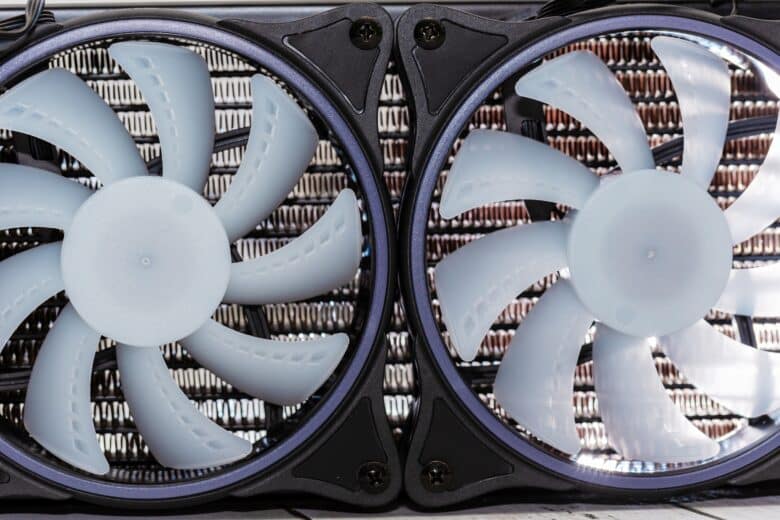
The radiator
The radiator had a quirk on the edge, which was repaired with a touch-up pencil. In principle, it is a good thing not to discard a radiator because of such a minimal visual defect, but to patch it. Still, it is a minor flaw. The fins look good, though they’re not quite as even as on other AIOs we’ve tested so far. This may well be due to the fact that copper is relatively soft and the fins are very tight.
Other than that, the radiator looks very solid and offers some nice details, such as a stop below the screw threads. These are there to prevent screws from being screwed in too far, which could cause damage. What is not directly visible, but can be emphasized by lighting from a certain direction, is the material of the radiator. Where it looks black at first, that’s just the fronts – the fins underneath show the material.
Cooler base with pump
The workmanship of the pump unit on the Alphacool Eisbaer Pro Aurora 360 CPU AIO is very good. Looking into the reservoir also impressively shows how well filled the system is, as only a tiny air bubble is visible. The cooler base, the contact surface to the processor, is also cleanly finished and shows no perceptible traces of tools.
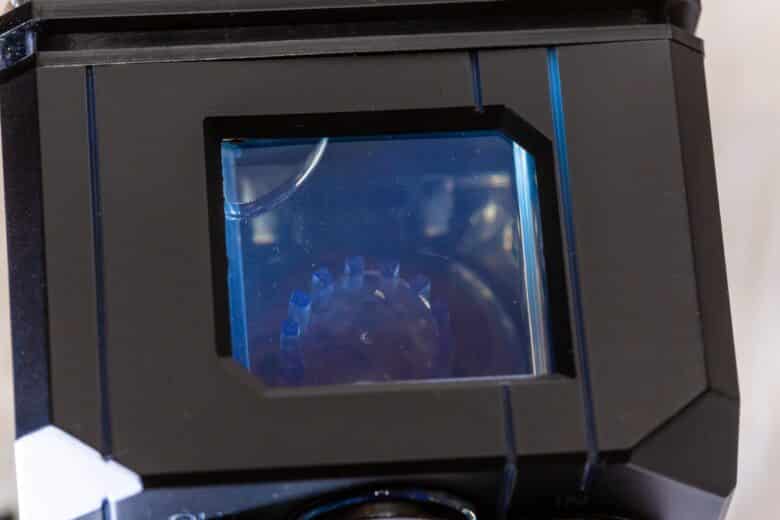
Assembly
- Assembling the system is not easy
- Moderate instructions
Assembling the Alphacool Eisbaer Pro Aurora 360 CPU AIO is no witchcraft in principle, but still belongs on the rather complex side. At the beginning, it seems quite simple: the two parts of the bracket are put around the cooler base and simply click together. But what follows is a bit more complicated: The screw has to be prepared. Since there are different combinations for different mechanisms, you have to pay close attention here. For the test on the AMD platform, the following things are needed: The screw for AM4, a pressure spring, a 0.5 mm washer, a 2 mm washer and a nut. First, the spring goes on the screw, followed by both washers. Then the screw is pushed through the parts attached to the base plate and now tightened with the nut.
The instructions do not specify how far to tighten the nut. As far as the bolt will hold? As far as it can go without a tool? All the way to the end of the thread? I tested each of the possibilities and the best results were achieved with the nut tightened as far as possible.
Now the thermal paste is applied to the processor. Then it becomes simple again in principle: The screws, which now hold tightly to the pump unit, are turned into the backplate. However, this is easier said than done: It’s hard to notice when the screws start to grip. When they do grip, they’re not really easy to turn. Although the instructions say not to use a tool, I didn’t see any other option than to reach for the screwdriver, and the best temperature results came with a proper tightening.
At the first attempt, the cooler base did not lie optimally on the processor, so the temperature quickly shot up. Really beginner-friendly simple is not the system – it can take a while until everything sits correctly here.
Control
- RGB controller is included, but you can use other controllers
- Regular fan connectors, but RGB cables are not standard, but an adapter is included
- Pump cable is quite short
The pump of the Alphacool Eisbaer Pro Aurora 360 CPU AIO is controlled via a 3-pin fan cable. This cable is borderline short and was difficult to put something out of sight. 2-3 cm more would do the cable good so that it can reach the pump header in a more relaxed manner on the MSI board used. The RGB lighting can be connected in series with the fans and this cable is inconspicuously thin.
The fans each come with a 4-pin PWM fan cable and can be connected to a header through an included splitter. Unlike the fan cable, the RGB cables on the fans have both a Male and Female connector. This allows you to connect the RGB cables together, as well as the pump unit at one end. Now there is the option of using the included ARGB controller or going to a regular ARGB connector on the motherboard or other controller through the adapter cable.
Expandability
- Additional radiators can be added
- Graphics card coolers can be added to the system
- Test with an additional 280mm radiator
From Alphacool, there are pre-filled radiators with quick-release fasteners that you can include in the system. This allows you to increase the headroom of the heat capacity and increase the performance. So we also perform a test right away, where the Alphacool Eisbaer Pro Aurora 360 CPU AIO already offers this feature. Alternatively, there is the option of including a graphics card AIO; but here you have to pay attention to the compatibility from the cooler to the graphics cards.
For the test, after the measurements of the Alphacool Eisbear Pro Aurora 360 CPU AIO in its original state, the Alphacool NexXxos 280 in the pre-filled version is also installed.
Workmanship and features are virtually identical to the factory included radiator. However, you can see that no fans are included, which adds to the cost if you don’t already have fans you want to use for it. However, screws for different thicknesses of fans are included instead. And these screws can be distinguished at first glance by the different screw heads. The ones with a Phillips head are for regular fans with a thickness of 25 mm, like the be quiet! Silent Wings Pro 4 140 mm used later in the test. In contrast, the other screws come with hex heads (and included tools) and are for thicker fans, such as the Noiseblocker NB-eLoop X shown in the following image on the right:
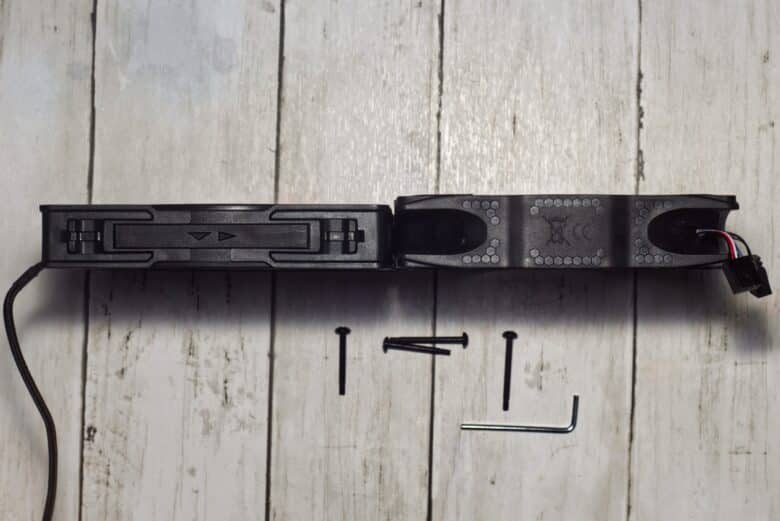
Assembly of the additional radiator
Actually, the assembly of the additional radiator Alphacool NexXxos is quite simple. It didn’t even require removing the Alphacool Eisbaer Pro Aurora 360 CPU AIO from the case. First, I checked to see what orientation the radiator would go into the case, as you are somewhat limited by the tubing lengths around the quick disconnects. After that, I mounted the fans and screwed the radiator on with the short screws provided (which were in the plastic bag with the regular fan screws). Now the quick release on the AIO is opened (keep a cloth handy – a few drops come out) and connected to the ends of the quick release on the NexXxos. Opening and closing goes via a simple screw thread.
It’s that simple and you now have two radiators in the loop. One disadvantage of the simple AIO system with the quick connectors is that the hoses have a fixed length and they now may flap around a bit chaotically. It’s not going to be quite as neat as you’d get with a proper custom water cooler or what a regular AIO looks like. With that out of the way, let the testing begin!
Test Procedure
- Test against native AIOs with no expansion capability
- Test against sister model Eisbaer Aurora HPE Edition 360
- Test with uniform premium fans
- Test with auxiliary radiator
Test candidates
For the Alphacool Eisbaer Pro Aurora 360 CPU test, we draw a comparison with the AORUS Liquid Cooler 360 as a typical Asetek AIO, which is identical to many AIOs from other manufacturers (for example, NZXT and Fractal Design) except for the fans and a few design features. Also tested against it is the relatively new DeepCool LS720, which represents a beefy mainstream AIO with an aluminum radiator and is a bit more affordable. Last but not least, the Alphacool Eisbaer Aurora HPE Edition 360 is included in the comparison as a non-pro counterpart to the tested AIO.
In terms of specifications, the two Alphacool AIOs read very similar, but the Pro version has a much larger contact area. The AORUS Liquid Cooler 360 has the smallest contact area.
Other components
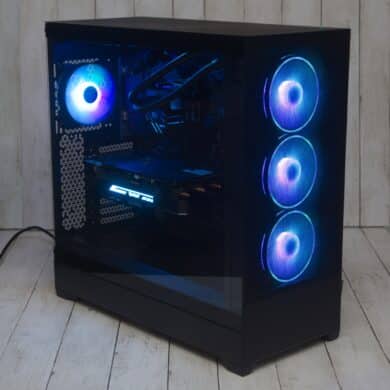
The test system sits in a Fractal Design Pop XL Air and the processor used is the AMD Ryzen 9 5950X, which pulls around 160 watts with an all-core overclock (4.3 Ghz @ 1.25 V peak core voltage) in Cinebench, depending on the temperature. The 360 mm radiators are installed in the front of the case. The three factory 120 mm case fans are used inside the case, where they run quietly at around 650 RPM at half power. Alphacool Subzero is used as the thermal compound on all coolers to eliminate performance loss at this level.
Test procedure
For the tests, Cinebench is now run and after 10 minutes of warm-up time, the average temperature is measured for one minute. This test is run at fixed fan speeds – 25% PWM, 50% PWM, 75% PWM and at full power for each. The result is then adjusted for room temperature, ergo only the temperature delta is measured. The pump runs at 100% power for all tests (both Alphacool: 2490 RPM / AORUS: 2500 RPM / DeepCool: 3030 RPM).
To also take the fans out of the equation and thus evaluate the pure performance from the pump unit and radiator, the tests are repeated with uniform premium fans, the be quiet! Silent Wings Pro 4 120 mm.
Then, the Alphacool NexXxos 280 is included as a second radiator in the test and the test run is repeated to see how it affects performance.
Test results in performance and volume
The results turned out to be quite interesting:
| 25% PWM | 50% PWM | 75% PWM | 100% PWM | |
| Alphacool Eisbaer Pro Aurora 360 CPU AIO | 57.7 K @ 930 RPM, 40 dB | 48.8 K @ 1650 RPM, 48 dB | 46.4 K @ 2170 RPM, 55 dB | 45.6 K @ 2600 RPM, 60 dB |
| Alphacool Eisbaer Pro Aurora 360 CPU AIO with be quiet! Silent Wings Pro 4 (UHS) | 51 K @ 950 RPM, 39 dB | 45.9 K @ 1600 RPM, 43 dB | 44.6 K @ 2200 RPM, 48 dB | 43.9 K @ 2750 RPM, 54 dB |
| Alphacool Eisbaer Pro Aurora 360 CPU AIO with nexXxos Eiswolf 280 mm and be quiet! Silent Wings Pro 4 (UHS) | 49.9 K @ 950 RPM (120 mm) & 800 RPM (140 mm), 39 dB | 45.2 K @ 1600 RPM (120 mm) & 1250 RPM (140 mm), 43 dB | 43.9 K @ 2200 RPM (120 mm) & 1790 RPM (140 mm), 51 dB | 43.7 K @ 2690 RPM (120 mm) & 2190 RPM (140 mm), 56 dB |
| AORUS Liquid Cooler 360 | 65.6 K @ 670 RPM, 39 dB | 51.3 K @ 1320 RPM, 46 dB | 48 K @ 1880 RPM, 51 dB | 46.6 K @ 2350 RPM, 57 dB |
| AORUS Liquid Cooler 360 with be quiet! Silent Wings Pro 4 (UHS) | 55.4 K @ 980 RPM, 39 dB | 48.1 K @ 1670 RPM, 44 dB | 45.4 K @ 2200 RPM, 48 dB | 45 K @ 2700 RPM, 53 dB |
| DeepCool LS720 | 52.7 K @ 840 RPM, 40 dB | 45.6 K @1480 RPM, 44 dB | 44 K @ 1900 RPM, 48 dB | 43.3 K @ 2230 RPM, 52 dB |
| DeepCool LS720 with be quiet! Silent Wings Pro 4 (UHS) | 50.6 K @ 950 RPM, 40 dB | 44.8 K @ 1600 RPM, 43 dB | 42.8 K @ 2200 RPM, 48 dB | 42.3 K @ 2750 RPM, 54 dB |
| Alphacool Eisbaer Aurora HPE Edition 360 CPU AIO | 61.8 K @ 930 RPM, 40 dB | 53.3 K @ 1650 RPM, 48 dB | 50.9 K @ 2150 RPM, 55 dB | 49.9 K @ 2550 RPM, 60 dB |
| Alphacool Eisbaer Aurora HPE Edition 360 CPU AIO with be quiet! Silent Wings Pro 4 (UHS) | 55 K @ 950 RPM, 39 dB | 49.5 K @ 1600 RPM, 43 dB | 48.3 K @ 2200 RPM, 48 dB | 47.7 K @ 2750 RPM, 54 dB |
Notes on the measurement: green means good performance, yellow means acceptable performance, and red means borderline performance. The temperature delta measurement means that this value must be added to the current room temperature to get a fairly accurate value. If we have a room temperature of 22.3° C and add a delta of 44.8 K, we get a CPU temperature of 67.1° C. So, all green temperature values mean that the CPU stays below 70°C under long-term full load at a room temperature of 20°C. For the yellow values, the CPU temperature is between 70 and 80° C in the corresponding scenario and the red values are above that.
Similarly, the volume: green is pleasant and unobtrusive, yellow is clearly audible and can be annoying, red is exhaustingly loud. Note on this: An increase of 6 dB corresponds to a doubling of the volume.
Evaluation of performance
- Ordinary cooling performance
- Moderate fan performance
- Beaten by the DeepCool AIO
Even though the additional radiator improves performance a bit, especially in the low speed range, further testing shows that the factory radiator can already handle the rather high waste heat of the AMD Ryzen 9 5950X with the 160-watt overclock very well. That might look different when you still integrate a graphics card into the circuit. However, what causes a much bigger performance jump is the fan change. Aside from being very loud, the Alphacool Aurora Rise fans are also underwhelming performance-wise. Where the DeepCool AIO also benefits from the fan change, the performance difference is much bigger with the Alphacool Eisbaer Pro Aurora 360 CPU AIO. The fans are relatively weak at low speeds and very loud at high speeds. Sad where the lighting looks so good. So I would recommend a fan replacement when the opportunity arises.
The AORUS Liquid Cooler has a similar problem to the Alphacool AIOs, with its fans getting almost as loud and having a comparable performance gap to the be-quiet! fans. Somewhat blowing all the other AIOs out of the water is the DeepCool LS720, which offers the best factory fans in the test and also offers the best temperatures away from them in the test with unified fans. Aside from the easier installation with less cable clutter. Only with the be-quiet! fans and the second radiator does the Alphacool Eisbaer Pro Aurora 360 CPU AIO achieve equivalent performance. This was hard to believe purely based on the specifications, but I verified the tests several times and also mounted the coolers several times.
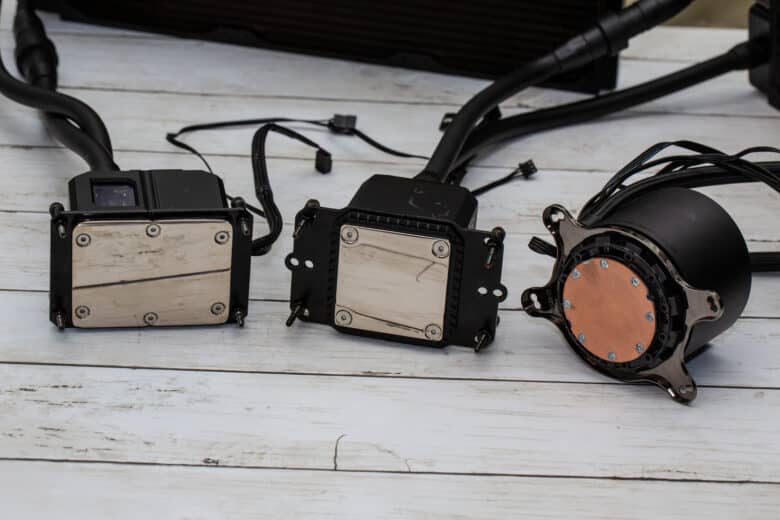
The Pro variant of the Alphacool Eisbaer noticeably outperforms the regular version. This is somewhat surprising given that the basic technology is the same. I wonder if this is due to the larger and more massive base plate?
Loudness rating
As could already be read out: the fans of the Alphacool Eisbaer Pro Aurora 360 CPU AIO are too loud. At the same time, this is not an engine volume, no rattling, no chattering. It is simply the sound of “cutting wind”. If we leave out the fans, the pump is quiet and barely audible. In this point, the DeepCool LS720 scores much worse, because the pump noise is clearly audible. However, this is only relevant in the low fan speed range.
The performance jump from the low to the medium speed range makes the biggest difference in any case. In the 25% range, almost all coolers perform weakly, with only the AORUS Liquid Cooler and the non-Pro version of the Alphacool Eisbaer exceeding a delta of 60 Kelvin. If you now consider the performance improvement in relation to the noise, it is hardly worth pushing the fans particularly past the medium speeds. The last 2° of extra power always multiplies the loudness.
More thoughts on the system
While this system may not be the cheapest solution or the most powerful in its base state, the Alphacool Eisbaer Pro Aurora 360 CPU AIO is not just an AIO. Rather, it is made up of parts from the custom water cooling range. So if you’re looking for an AIO, for example, but have long-term plans to switch to custom water cooling in your next system, for example, you can already take parts from that system, like the high-quality copper radiator. The expandability and the possibility of maintenance by refilling the liquid as well as the replacement of individual components in case of a defect are also features that do not come into play through the pure performance test. But they can definitely become relevant over time, while various defects usually mean the death blow for other all-in-one coolers. Also, the use of the copper radiator prevents the metals from reacting and degenerating.
That being said, the Alphacool Eisbaer Pro Aurora 360 CPU AIO is a relatively normal access cooling option that can be used for unusual processors, like AMD EPYC. For this, the choice of coolers is overall very small and often associated with extremely noisy server fans.
Conclusion
The test of the Alphacool Eisbaer Pro Aurora 360 CPU AIO leads to ambivalent results: On the one hand, the performance is good, as is the design. Somewhat disappointing are the loud factory fans and the assembly is not quite as simple as it is presented in the manual. Also, the comparison with other 360mm AIOs shows that the performance is good, but can already be obtained cheaper. On the other hand, the Alphacool Eisbaer Pro Aurora 360 CPU AIO offers some unique selling points that set it apart from the competition, for which the price is quite good again.
Alphacool Eisbaer Pro Aurora 360 CPU
Workmanship
Design
Assembly
Features
Performance
Value for money
84/100
The Alphacool Eisbaer Pro Aurora 360 CPU AIO offers custom parts and high compatibility with large sockets at a humane price, is in the range of a regular AIO in terms of performance, but is a bit noisy.


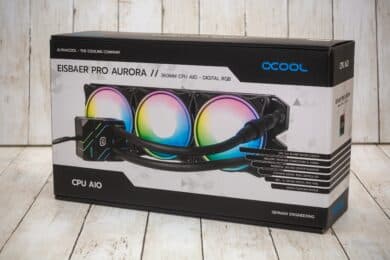
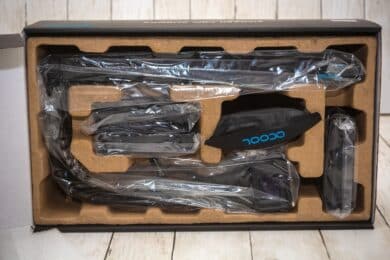
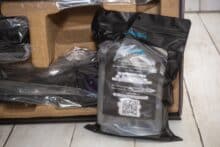
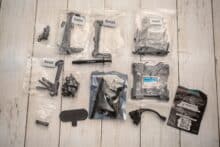
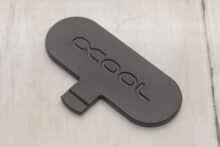
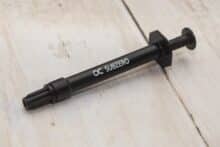


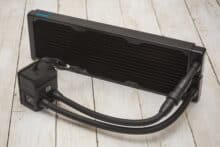


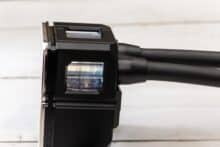



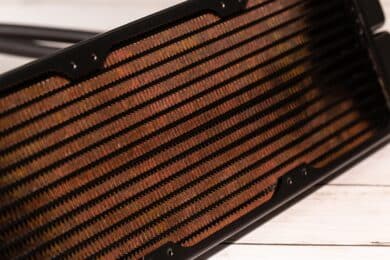
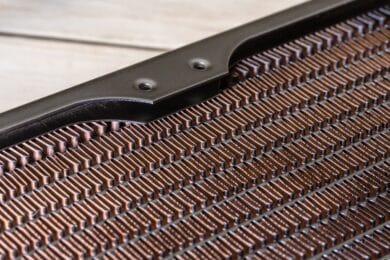
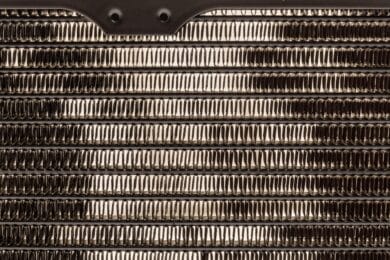
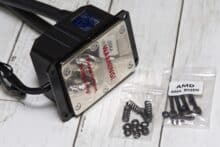
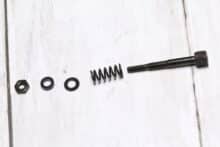
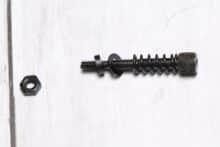

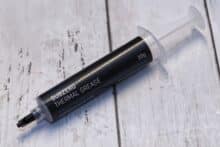


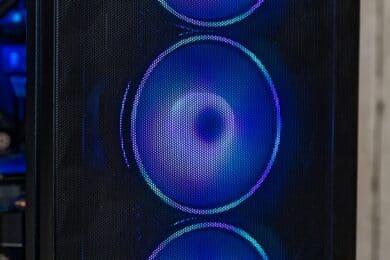

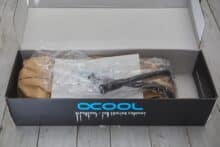
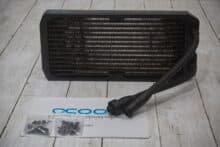
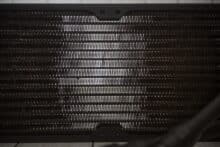
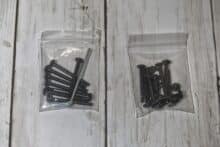



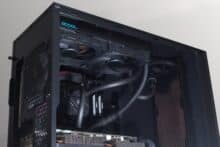

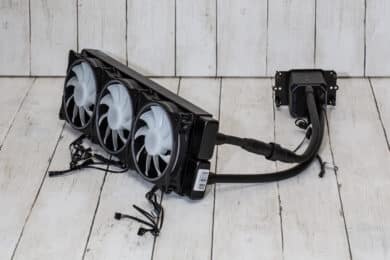






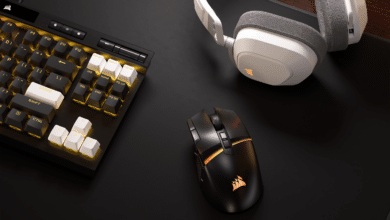
No replies yet
Neue Antworten laden...
Gehört zum Inventar
Beteilige dich an der Diskussion in der Basic Tutorials Community →